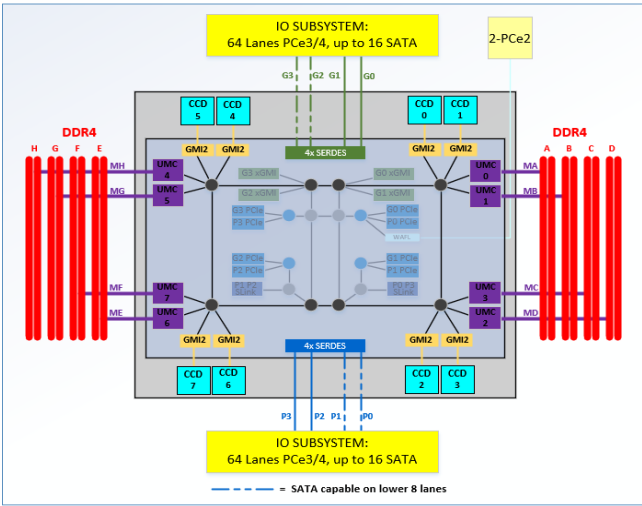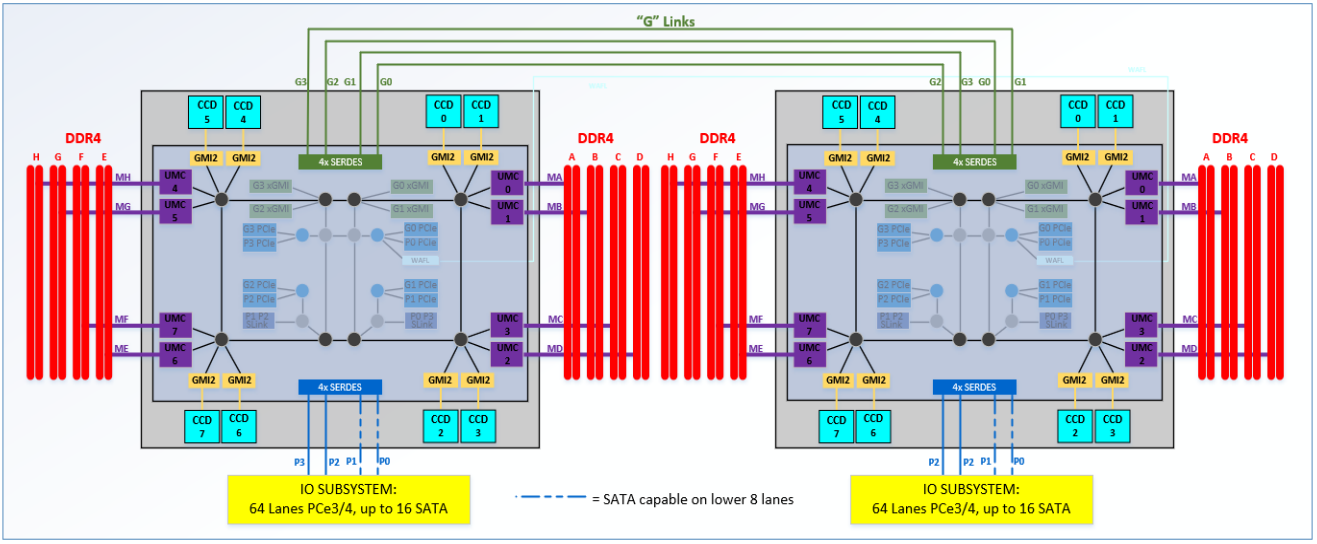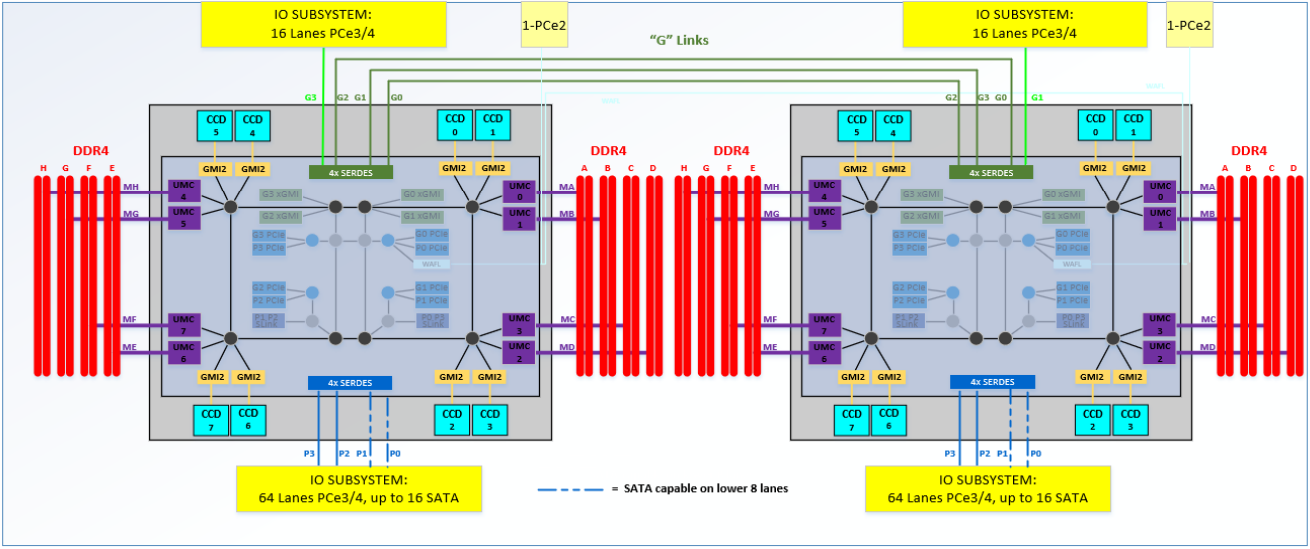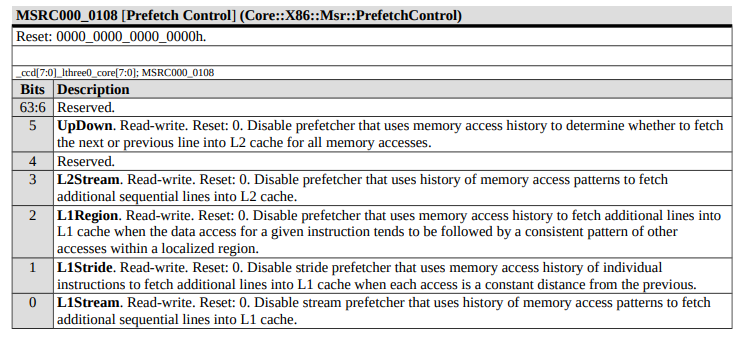Notes on AMD Processor
- Notes on AMD Processor
- Pictures of Physical Package
- Notes from Processor Programming Reference
- How to Change Processor Settings
Pictures of Physical Package
Notes from Processor Programming Reference
See here for source.
I/O Diagram
One Socket I/O

Two Socket I/O with 4 XGMI Links

Two Socket I/O with 3 XGMI Links

Core Complex (CCX) Diagram

How is the iDRAC connected?
See page 30
Each IOD (I/O die) has:
Four instances of NorthBridge IO (NBIO), each of which includes:
- Two 8x16 PCIe® Gen4 controllers.
- One instance includes a 2x2 PCIe® Gen 2 controller, which can be used to attach a Baseband Management Controller (BMC)
Measuring Performance - Effective Frequency
When using something like iDRAC telemetry it can poll the effective frequency via the effective frequency interface.
The effective frequency interface allows software to discern the average, or effective, frequency of a given core over a configurable window of time. This provides software a measure of actual performance rather than forcing software to assume the current frequency of the core is the frequency of the last P-state requested
System Management Unit
There is a system management unit for each proc integrated onto the I/O die.
How to Change Processor Settings
There are three ways to change settings on the processor:
- AMD Host System Management Port (HSMP)
- Epyc System Management Interface (E-SMI) Library
- Technically, this rides on top of the HSMP but it is a separate userspace library
- Run Commands Directly on the Processor
Run Commands on the Processor
Let's say you want to disable the L2 Stream HW Prefetcher.

This can be accomplished with the write MSR (Model Specific Register) Command. Model Specific Registers (MSRs) are:
any of various control registers in the x86 instruction set used for debugging, program execution tracing, computer performance monitoring, and toggling certain CPU features.
There is a good lecture available on the subject available here.
If you want to control prefetch you would select the appropriate register and then bitmask 1 to bit 3 as described here:
